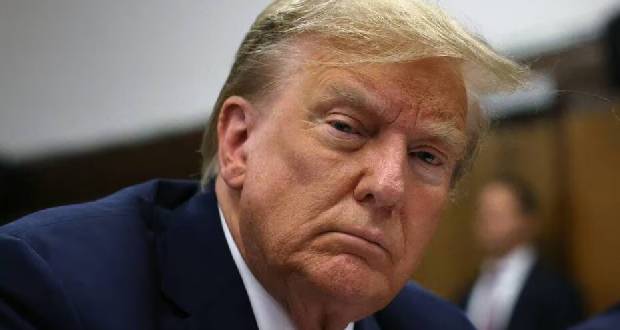Publicité
Quo vadis University of Technology, Mauritius?
Par
Partager cet article
Quo vadis University of Technology, Mauritius?

The Private Notice Question of the Leader of opposition last week put in focus the rapid expansion of enrolment in the higher education sector not only in Mauritius but worldwide. The rapid expansion has led to increasing graduate unemployment. Most pro-active higher education institutions (HEIs) have taken important steps to better align their education offers with labour market needs and current technological progress. While politicians and political protégés are interested in scoring and settling scores, parents and students are keener to know what the universities are offering in their courses to guarantee their future.
World Development Indicators data show that the proportion of unemployed people who have attained tertiary education increased between 2007 and 2013 in 46 countries (World Bank, 2017). In addition, numerous studies indicate a mismatch between the skills required in the labour market and the profiles of graduates. The reality of the Mauritian situation, the poor governance in many HEIs and political cronyism is evidenced in its unemployed graduates.
The relationship between higher education and employment is not only about ‘‘getting a first job’’, but also about ‘‘doing that job’’, ‘‘changing that job’’ and ‘‘getting a different job’ in the future. In this view, graduate ‘‘employability’’ involves, in addition to the skills to find a job, a mindset of adaptability and flexibility and skills for life-long learning. Those who continue to think inside the box and believe that they will stick to one job all their life are out of sync with the realities of development at the global level.
Internal Quality Assurance (IQA) of every university needs to be concerned with graduates’ futures and include the perspectives of graduates and employers, as well as of students and academic staff. External Quality Assurance and audits are efficient tools to gauge the value-for-money worth of courses and universities. While Mauritius wishes to open its doors to outsiders, those inside our own institutions, like our politicians, continue to wear blinkers, happy with unions leading the battles of character assassination and academic poverty.
There are many lessons that can be learnt from other countries: Daystar University (DU, a private university in Nairobi) conducted its first tracer study and employer survey in 2010, and a second in 2015. Its QA policy requires academic units to conduct tracer studies for recent graduates every 5 years. The surveys ask employers to rate DU graduates against other graduates, indicate strengths and weaknesses, and recommend skills for the labour market. DU was rated the second-best university in Kenya for graduate employability.
The University of Bahrain (UoB) was created in 1986, from a merger of two pre-existing colleges, as the only national HEI in the Kingdom of Bahrain. As part of its IQA, UoB operates an annual programme and course assessment cycle that involves monitoring the progress of students’ Intended Learning Outcomes (ILOs). For this purpose, academic staff and programme heads prepare course or programme portfolios. The QA committee of each programme audits portfolio and programme ILOs annually. To take employers’ feedback into account, QA committees include a programme advisory sub-committee composed of alumni and employers. The committees also perform market research and analyses to identify changes in employers’ expectations or labour market standards.
National quality audits and programme accreditation in South Africa led to many changes in universities. One visible effect was the development of IQA policies and QA structures in universities in accordance with criteria and requirements emanating from the Higher Education Quality Committee (HEQC). At the University of the Free State (UFS), a formalized, centrally located QA system was first established in 2006 in response to HEQC’s institutional quality audit system. HEQC’s 2008 audit report highlighted the lack of monitoring of quality policies at the university, particularly at the decentralized level. This led to the transformation of the institutional structure for IQA and the integration of QA into the Directorate for Institutional Research and Academic Planning.
National QA agencies can also request that HEIs establish specific tools for data collection. In China, the External Quality Assurance system consists of compulsory annual institutional self-evaluations, external conformance evaluations conducted every five years and professional accreditation of certain study programmes. The Higher Education Evaluation Centre requires Chinese universities to submit annual reports on the quality of undergraduate teaching. Xiamen University, a comprehensive university in China, adapted its IQA system to respond to national requirements by introducing an annual undergraduate evaluation, teaching supervision, teaching observation and feedback from students.
There are so many examples throughout the world of such audits and quality assurance systems that are institutionalized and open that can be scrutinized by any member of the public whereas in Mauritius, we are informed that even the Board of Governors of the University of Technology, Mauritius (UTM) has not yet debated the audit that was carried out by the Tertiary Education Commission (…).
We expect our only University of Technology to coordinate actions to offer pathways to learn in community-based learning environments with multiple providers that can attend the variety of learner needs in a given context with the support of ICT (and frontier technologies, Artificial Intelligence, Extended school programmes in the UK). In what ways are the courses offered at the university different from what they were when the university enrolled its first cohorts of students?
Increasingly educationists and researchers are questioning the role and purpose of the school and the present school model, as it is presently configured. The rectangular classroom, with a black or white board, with the teacher lecturing in front of some 30-40 students, with their textbooks and notebooks, even with their tablets that teachers cannot use as a pedagogical tool, is a model that has lasted over 200 years and is increasingly being questioned.
With the advent of the internet, of the availability of the web on mobile phones, should the UTM not spend more of its time on researching the role and the type of technology as a means of social transformation and the conducive learning environment that is required? Children who are born amidst modern types of media are already finding the present school setting totally obsolete and not responding to their needs. Most of our worthwhile learning experiences happen outside the classroom.
Increasingly, students hate going to school because the teaching methodologies (the black/ white board, the textbooks, markers and pens as technology) remain as they were in the past. We must find more and better ways of using mobile learning tools that young people are using in their everyday life, like the mobile phones, tablets, laptops, etc. Where else will the country at large look for solutions, if it is not the University of Technology? Can the UTM reflect and take position on the stupid idea of forcing students to go to school that they find is completely irrelevant since all the content is available on the internet? What should teachers teach at school? What syllabus and for what purpose? Should the tablets be used only for the purpose of the present school curricula? What type of internet safety?
Technology is the master- key that can help us make a quantum leap at all levels. However, we must stop political bickering, fault-finding and concentrate on the futures of mobile learning, on the kind of pedagogies for the skills that we need for the 21st century (beyond the limited, narrow, unambitious and parochial nineyear schooling) and the way we can train creative and collaborative knowledge-builders. This remains the major challenge for 21st century education.
Publicité
Les plus récents






